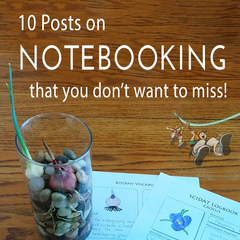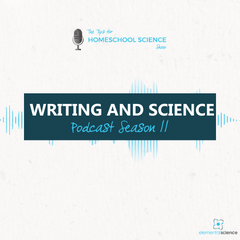Astronomy - the study of the stars, planets, and all that other stuff that resides way out in space!
This month, as the weather turns warmer, I wanted to share a brief picture of how you can teach the principles of astronomy to the students in your homeschool, co-op, or school. You can use these ideas to help you create or choose a homeschool science curriculum.
Teaching Astronomy at Home
Astronomy with Preschoolers
Astronomy is an interesting subject to tackle in preschool. Kids love to look up at the stars at night, especially if they get to stay out past bedtime!
You can introduce basic concepts through hands-on demonstrations and art projects. You can teach a simple astronomy unit that covers topics like:
- Observation
- Stars
- The Sun
- Our planet, Earth
You can use simple activities, such as stargazing, making a constellation jar, or making a glow-in-the-dark representation of the solar system. You can also have the students memorize a simple sentence that explains the concepts in a language they can relate to.
Astronomy with a preschooler will be short, sweet, and loads of science fun!
Astronomy with Elementary Students
Astronomy during the elementary years will be very hands-on and slightly project-driven.
You can explore the principles of astronomy through hands-on demonstrations and projects that display the concepts in action. You can also read more about these principles in age-appropriate encyclopedias or living books.
You can spend three to four weeks cover the basics for topics like:
- Our solar system
- Stars
- Asteroids
- Planets
- Moon
- Constellations (like the Big Dipper and Orion)
As part of astronomy, you and your student can have fun as they create a wall-sized version of the solar system, eat their way through the cycles of the moon, and make their own shoebox planetarium. They will learn a ton as the see the characteristics of the planets, our moon, and the constellations in our sky.
Astronomy with an elementary student will explore the principles in a practical hands-on way.
Astronomy with middle school students
Middle school students can dig deeper into the principles of astronomy they saw during the elementary years and add on a few more.
You can teach your student to play with the principles of this subject through inquiry-based experiments. You can also have them read and write about what they have learned.
In your students, you can cover concepts like:
- The universe
- The Big Bang Theory
- The cycle of a star
- Galaxies, including the name of our galaxy and the four types of galaxies—irregular, elliptical, spiral, and barred spiral
- The planets in our solar system and their conditions
- Comets, asteroids, and meteorites
- Telescopes and Satellites
- Several of the key astronomers (i.e. Copernicus, Galileo, and so on)
The students can learn about our night sky by making a constellation geoboard, they can test whether life can exist on the different planets, and learn about orbits. They can study the different galaxies and learn to appreciate how small our planet is in comparison with the rest of the universe.
Astronomy with a middle school student will reinforce the principles through inquiry-based methods.
Astronomy with high school students
If you have taught astronomy at home throughout the elementary and middle school years, your students will have a good grasp of our solar system, stars, and the rest of the universe.
Now, they can pick up that textbook and tackle the more abstract principles of black holes, travel in space, and anti-matter without getting bogged down by the basics.
Wrapping it Up
If you teach astronomy from the beginning, your student will be prepared and maybe even a little bit excited to learn about this subject when they reach high school!
You can mine our Pinterest board for more astronomical activities!
Follow Elemental Science 's board Earth Science & Astronomy Science Projects on Pinterest.
Or check out the following Elemental Science programs with easy-to-use plans for teaching astronomy:
- For Preschool – Intro to Science
- For Elementary Students –Earth Science & Astronomy for the Grammar Stage or Astronomy Lapbooks
- For Middle School Students – Earth Science & Astronomy for the Logic Stage
- For High School Students – Earth Science for the Rhetoric Stage (Coming Soon!)
Don't miss the other posts in this series:
Over the last year, we have been sharing tips and ideas for teaching the various disciplines of science at home. Here's a look at the complete series:


